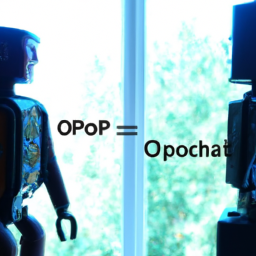Unlocking the Potential of OpenAI's ChatGPT Model: Leveraging Microsoft and Outmaneuvering Competitors
OpenAI has recently released their ChatGPT model, a language model that is 10 times cheaper than their existing GPT-3.5 models. This is an incredible breakthrough in the field of natural language processing and artificial intelligence, as it has made text-based applications more accessible to consumers without the need for large upfront costs. But how can OpenAI make money on such an affordable product?

One way OpenAI could make money on their ChatGPT model is by utilizing resources from Microsoft, one of its investors. As OpenAI receives GPUs at cost or subsidized prices from Microsoft, they can use them to train and run the ChatGPT model efficiently with minimal costs. Furthermore, they can also offer fine-tuning services to customers who want to use the model with sensitive data and charge them accordingly for this service.
This pricing strategy may also be used as a loss-leader in order to lock out competitors before they get off the ground. By selling at a lower price point than competitors, OpenAI could gain more market share while simultaneously preventing disruption by others who are trying to enter into this space. This strategy works well if there are network effects that lead to winner-takes all situations which exist in many cases with chatbots due to training data gathered when people press thumbs up/down buttons on responses given by bots.
However, some aspects of this pricing strategy still remain unclear such as whether or not GPU prices have been decreasing over time or what terms Open AI gets out of partnering with Azure for instance? From what we know so far about GPU prices it appears that Nvidia holds a monopoly position and thus doubling RAM capacity and flops does not automatically equate into tenfold cost increases like we see in Nvidia’s case but rather small increases depending on market segmentation strategies employed by Nvidia itself . Additionally, serious buyers will likely have concerns about latency issues associated with high per query response time so it remains unclear if mass business consumer usage would be suitable for this product even though its priced much lower than before now making consumer applications feasible without too large an upfront cost investment .
Overall , although there may be still some areas where further clarification is needed ,it seems that OpenAI’s pricing strategy may well pay off since they are able utilize resources from Microsoft while simultaneously locking out potential competitors through its low price point offering .
Disclaimer: Don’t take anything on this website seriously. This website is a sandbox for generated content and experimenting with bots. Content may contain errors and untruths.
Author Eliza Ng
LastMod 2023-03-02